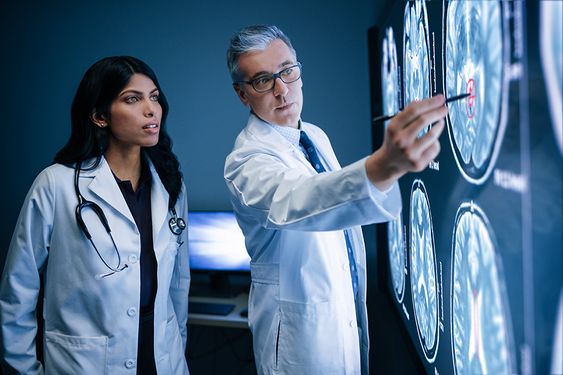
Table of Contents
The image of a nurse has long been defined by compassion, empathy, and clinical expertise. While these remain at the heart of the profession, the 21st century is adding a new layer: data literacy. As healthcare increasingly embraces technology, nurses, often the primary point of contact for patients, are finding themselves on the frontlines of a data revolution that is reshaping every aspect of care. So, what is the role of data science and technology in nursing?
No longer limited to clipboards and paper charts, nurses are now navigating electronic health records (EHRs), using wearable technology to monitor patients remotely, and interpreting data-driven insights to make real-time decisions. This use of data science and technology in nursing is not just changing how care is delivered but fundamentally expanding the role of the nurse, empowering them to be even stronger advocates for patient well-being.
What is Data Science?
Data science is a rapidly evolving field with the potential to revolutionize a wide range of sectors. It involves extracting knowledge and insights from data, both structured and unstructured. Data science combines domain expertise, programming skills, statistical knowledge and machine learning.
Domain expertise entails understanding the specific area where the data comes from, for example, healthcare, finance or marketing. Programming skills focus on languages such as R and Python that are essential to cleaning, manipulating and analysing large databases. On the other hand, statistical knowledge emphasizes the use of statistical methods to identify trends, patterns and relationships with the data, separating meaningful signals from random noise.
Machine learning is an exciting sub-field of artificial knowledge that involves training algorithms to learn from data and make predictions or decisions without explicit programming. As we continually generate increasing amounts of data, the demand for skilled data scientists who can unlock its hidden value will only keep growing.
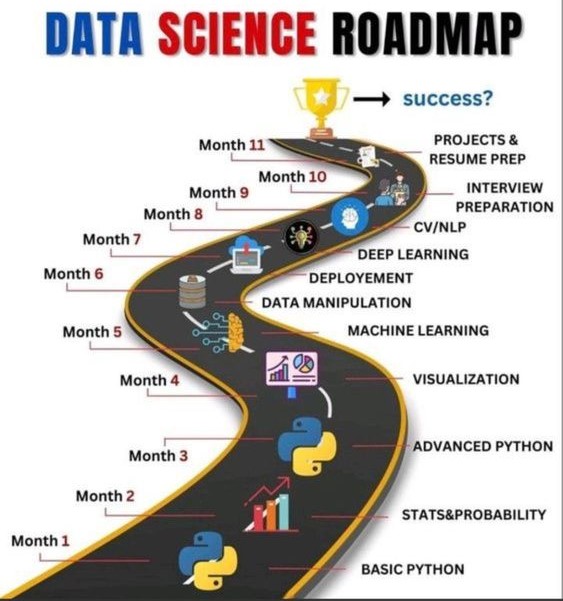
When looking into the role of data science and technology in nursing, it is also important to determine the work of data scientists. While data scientists can handle different jobs, their key roles include;
- Identifying and framing problems: They figure out which questions can be answered using data and how to approach them.
- Collecting and cleaning data: Real-world data is messy! Data scientists spend a lot of time preparing data for analysis, dealing with missing values, inconsistencies, and different formats.
- Exploring and visualizing data: Through charts, graphs, and dashboards, they communicate findings and tell compelling stories with data.
- Building and testing models: They develop algorithms to classify, predict, or discover hidden patterns within the data.
- Deploying and monitoring models: Putting models into action and continuously evaluating their performance is essential to ensure accurate and reliable results.
The Role of Data Science and Technology in Nursing: Electronic Health Records and Beyond
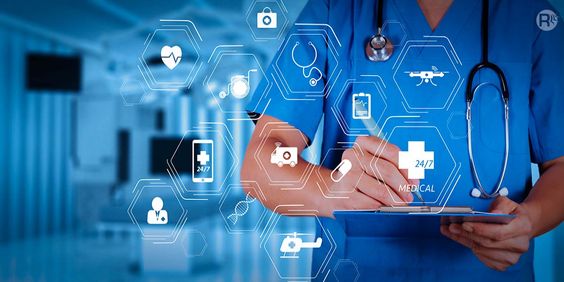
The most immediate impact of data science and technology in nursing has been the widespread adoption of EHRs. These digital platforms have replaced cumbersome paper trails, providing a centralized and comprehensive view of a patient’s medical history, medications, test results, and treatment plans.
While the transition to EHRs has come with its own set of challenges, such as concerns about data privacy and usability issues, the benefits are undeniable.
- Improved Access to Information: Nurses can now access critical patient information in seconds, regardless of their location or the time of day. This readily available data empowers nurses to make more informed decisions and provide faster, more targeted care.
- Enhanced Communication and Collaboration: EHRs facilitate seamless communication between nurses, physicians, specialists, and other members of the healthcare team. This improved coordination reduces the risk of medical errors and fosters a more collaborative approach to patient care.
- Data Collection for Research and Analysis: The data collected in EHRs is a goldmine for clinical research. By analyzing large datasets, researchers can identify trends, develop predictive models, and gain valuable insights that can improve patient outcomes on a broader scale.
Are you interested in reading more about how EHRs are transforming the nursing practice? Then, simply request a customized nursing paper from trusted writing websites such as nursingpapers.us.com. You can also check out Google Scholar for academic articles, journals and research papers about data science and technology in nursing.
Wearables, AI, and the Future of Personalized Care
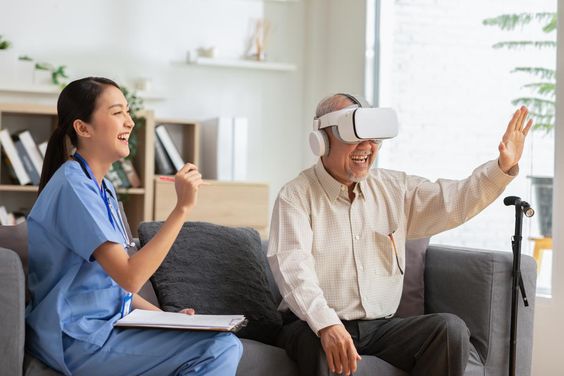
While EHRs provide a powerful foundation, the data revolution in nursing extends far beyond these systems. Wearable technology, such as smartwatches and fitness trackers, is giving nurses access to a constant stream of patient data – heart rate, activity levels, sleep patterns, and more.
This real-time data allows for:
- Proactive Patient Monitoring: Nurses can use wearable data to identify early warning signs of potential health issues, enabling them to intervene proactively and prevent complications. This is particularly valuable for managing chronic conditions like diabetes, heart disease, and COPD.
- Personalized Care Plans: Data from wearables, combined with patient history and lifestyle factors, empowers nurses to develop individualized care plans tailored to each patient’s unique needs and goals.
- Improved Patient Engagement: By giving patients access to their own health data, nurses can encourage greater self-management and empower them to take an active role in their own care.
The emergence of artificial intelligence (AI) is another aspect that promises to revolutionize the role of data science and technology in nursing. AI-powered tools are being developed to analyze vast amounts of data, identify patterns, and generate actionable insights. That could translate into a number of things in the nursing field including:
- Early Detection of Sepsis: AI algorithms are being used to analyze patient data in real-time to identify early signs of sepsis, a life-threatening condition that requires immediate intervention.
- Predicting Patient Deterioration: AI models can analyze patient data to predict the likelihood of deterioration, allowing nurses to proactively adjust care plans and prevent potentially serious complications.
- Automating Administrative Tasks: By automating routine tasks such as documentation and medication reminders, AI can free up nurses’ time, allowing them to focus on providing direct patient care and building relationships.
The Human Element: Essential Skills for the Data-Driven Nurse
The influx of data science and technology in nursing does not negate the need for the human touch. Instead, it necessitates an evolution of nursing skills, emphasizing data literacy and technological proficiency as key components of holistic patient care.
Today’s nurses need to be equipped to:
- Critically Analyze Data: Nurses need to be able to interpret data from various sources, identify trends, recognize inconsistencies, and use critical thinking skills to make informed clinical decisions.
- Understand Ethical Implications: As stewards of sensitive patient data, nurses must navigate the ethical complexities surrounding data privacy, security, and responsible use of AI.
- Embrace Lifelong Learning: The rapid pace of technological advancement in healthcare requires nurses to be adaptable, embrace lifelong learning, and continually update their skills and knowledge.
The Future is Collaborative: Building a Data-Driven Healthcare Ecosystem
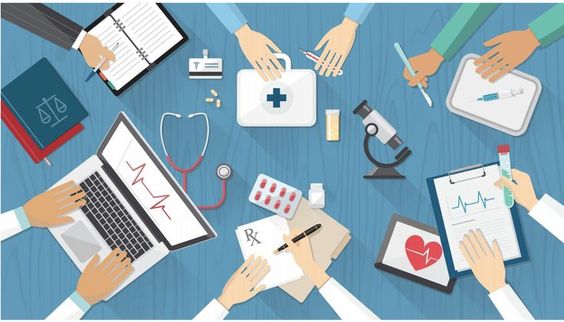
The integration of data science and technology in nursing is not happening in isolation. It requires a collaborative effort from all stakeholders in the healthcare ecosystem:
- Nursing Schools: Curriculums need to adapt to equip future nurses with the data literacy skills and technological proficiency required for 21st-century care.
- Healthcare Institutions: Hospitals and clinics need to invest in the infrastructure, training, and support systems that empower nurses to effectively utilize data and technology.
- Technology Developers: Companies creating healthcare technology need to prioritize user-friendliness, data privacy, and collaboration with nurses to ensure that tools are designed to meet their specific needs.
The data revolution in nursing is still in its early stages, but the potential for improving patient outcomes and transforming the healthcare landscape is immense. By embracing technology, fostering data literacy, and collaborating across disciplines, nurses can lead the way in creating a future of healthcare that is more efficient, personalized, and ultimately, more human.
FAQs About Data Science and Technology in Nursing
1. What is Data Science and Technology in Nursing?
This field involves using data analysis techniques, software, and technology to improve patient care, streamline nursing workflows, and inform healthcare decision-making.
2. How Can Nurses Develop Data Science and Technology Skills?
- Continuing Education: Enroll in workshops, online courses, or certificate programs focused on data science, healthcare informatics, or related fields.
- Professional Development: Attend conferences and webinars that explore the intersection of nursing and technology.
- On-the-job training: Seek opportunities within your healthcare organization to learn and apply data skills.
- Networking: Connect with nurses and professionals working in data science and technology roles.
3. What are the challenges of implementing Data Science and Technology in Nursing?
- Data privacy and security concerns: Ensuring patient data is protected and used ethically.
- Resistance to change: Overcoming reluctance from nurses who are hesitant to adopt new technologies or workflows.
- Data literacy gap: Bridging the knowledge gap and equipping nurses with the necessary data skills.
- Integration issues: Ensuring seamless integration of new technologies with existing systems and processes.
4. What does the future hold for Data Science and Technology in Nursing?
This field is rapidly evolving and will continue to transform the way nurses provide care. We can expect to see:
- Increased use of AI and machine learning in clinical decision-making.
- Widespread adoption of telehealth and remote patient monitoring.
- More sophisticated data analytics for personalized medicine and preventive care.
- Greater emphasis on data literacy and technology skills in nursing education.
The Bottom Line
The above article provides a starting point for understanding data science and technology in nursing. For more information, consult reputable sources and connect with experts in the field. At phdnursewriter, we have experienced writers in healthcare who can help you with writing top notch papers about data science and technology in nursing as well as other topics. You can also check out our nursing paper samples for more inspiration.





